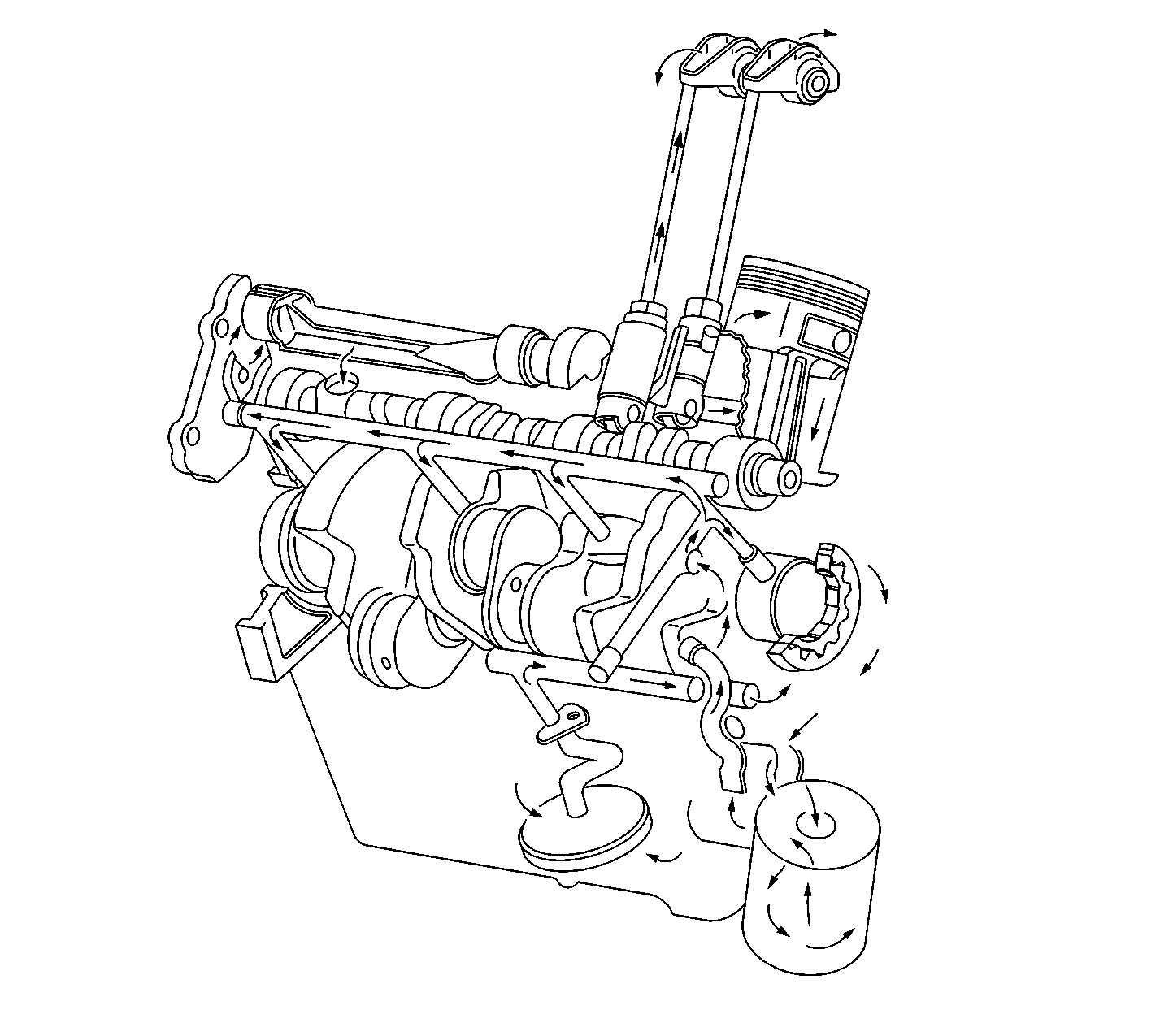
The engine lubrication system is of the force-feed type. The oil is supplied under full pressure to the crankshaft, connecting rods, valve lifters, camshaft, and rear balance shaft bearing. A controlled volume of oil is supplied to the valve rocker arms and push rods. All other moving parts are lubricated by gravity flow or splash. The engine oil is stored in the lower crankcase (oil pan) which is filled through a filler opening in the valve rocker arm cover. A removable oil level indicator, on the left side of the engine block, is provided to check the oil level. The oil pump is located in the engine front cover and is driven by the crankshaft. It is a gerotor-style pump which is a combination of a gear and a rotor pump. It is connected by a passage in the cylinder block to an oil screen and pipe assembly. The screen is submerged in the oil supply and has ample volume for all operating conditions. If the screen becomes clogged, oil may be drawn into the system through the oil pressure relief valve in the oil filter adapter. Oil is drawn into the pump through the screen and pipe assembly, and a passage in the crankcase, connecting to the passages in the engine front cover. Oil is discharged from the oil pump to the oil filter adapter. The oil filter adapter consists of an oil filter bypass valve and a nipple for installation of an oil filter. The spring-loaded oil pressure relief valve, located in the engine front cover, limits the oil pressure. The oil filter bypass valve opens when the oil filter is restricted to approximately 68.95 kPa (10 psi) of pressure difference between the oil filter inlet and discharge. The oil will then bypass the oil filter and channel unfiltered oil directly to the main oil galleries of the engine. A full-flow oil filter is externally mounted to the oil filter adapter on the lower right front side of the engine. If the filter element becomes restricted, not allowing engine oil to pass through, a spring-loaded bypass valve opens. The main oil galleries run the full length of the engine block and cut into the valve lifter guide holes to supply oil at full pressure to the valve lifters. Holes, drilled from the crankshaft bearings to the main oil gallery, intersect the camshaft bearing bores to supply oil to the cam bearings.
Oil is transfered from the crankshaft bearings to the connecting rod bearings through holes drilled in the crankshaft. Pistons, piston pins, and cylinder walls are lubricated by oil splash from the crankshaft and connecting rods.
Each valve rocker arm and valve is supplied with oil through the tubular push rod. The oil comes from the inside of the valve lifter passing around the metering valve and through a hole in the push rod seat. Oil from the push rod passes through a hole in the push rod seat, and emerges on top of the push rod seat boss.
